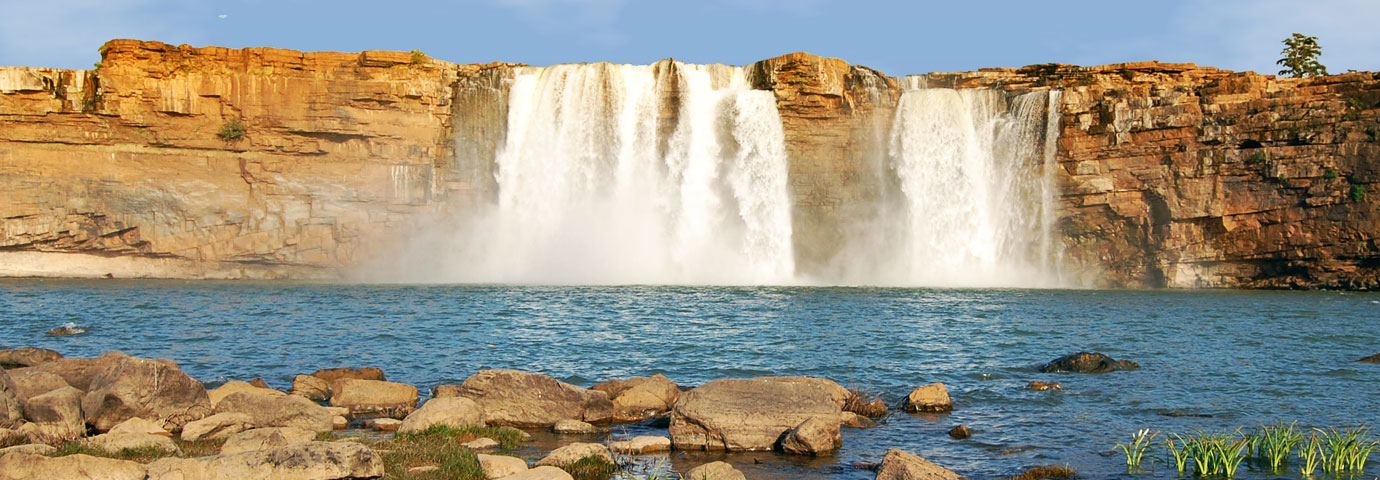Chitrakut is one of the most sacred pilgrim sites of north India. It covers a vast area comprising five villages: Sitapur, Karvi, Nayagaon, Kamta, and Khohi. The mountain ranges of the Vindhya surround the area. Mixed forests spread in all directions. An aura of sanctity surrounds the place. The countryside seems to exert a peculiar power over the residents and visitors alike. Today, the main pilgrim center, Ram Ghat, on the banks of the river Mandakini is synonymous with Chitrakut. This small, sleepy village is associated with many a legend and epic. It is believed that Rama and Sita, the leading dramatis personae of the epic Ramayana, spent 11 years out of their 14 years of exile in the forests around Chitrakut.
Tourists Attractions
Most of the spots of tourist importance are along the river Mandakini. Janaki Kund is a straight stretch of river and a series of steps on the left bank descended to the water, almost greenish-blue in color. According to a legend, it was the favorite bathing spot of Sita. Beyond Janaki Kund, the river is enchantingly beautiful.
Ram Ghat is a long stretch of steps cut into the banks where pilgrims perform religious ablutions and rituals. Many compare its hallowed sanctity to Rishikesh and Benaras.
At Sphatik Shila, a large boulder has impressions of Lord Rama's footprints.
In addition, there is Deva Ganga, Sati Anasuya, and Hanuman Dhara.
Places Around Chitrakut
Gupt Godavari, 19 kilometers south of Chitrakut, is also an important place to visit. There are two caves, on the hillside, one larger than the other. There, a subterranean steam emerges out of one cave and after flowing for a distance fills a pool before disappearing again and hence the name Gupt Godavari. It is popularly believed that Lord Rama during his exile held court in this cave, along with his faithful brother Lakshman. At the entrance to the cave is a beautifully carved sculpture of the Trinity (Brahma, Vishnu, and Shiva).
Kalinjara Fort, 52 kilometers southwest of Chitrakut, is said to be an equally hallowed place. This fort is mentioned in the Puranas and Mahabharata. By its mere reference in the scriptures and epics, the Fort's antiquity is established. Perhaps the physical immensity of the Fort has remained unchanged. It was in the reign of the Chandela dynasty in the 10th and 11th centuries that the fort finds increasing mention and importance. It is said that in the early 10th century, the Chandela King, Yasovarman, on ascending the throne was given the title of 'Kalinjaradipati', or Lord of Kalinjara. According to the local residents, no enemy ever stormed this Fort. It was always captured through treachery or a long siege. There, most of the ancient buildings are in ruins and only three buildings stand in different stages of decay. The old palaces now accommodate sculptures collected from different parts of the Fort. The large tank adjacent to the Palace, which provided water to the garrison under siege, now lies half empty. The main 'royal' entrance to the Fort is on the northeastern face of the Fort.
In addition, there is a museum in the palace. The sculptures are mostly of Chandela era; the treatment by chisel is similar to that of Khajuraho temples. There, Mrig Dhara is a small spring oozing out of the stone. This small spring is believed to have provided drinking water since time immemorial.
How To Reach
By Road - Chitrakut in Madhya Pradesh is 125 km west of Allahabad and Kalinjara Fort is 52 km southwest of Chitrakut. Blacktop roads connect these places.
By Air - Allahabad is connected by Indian Airlines flights from Delhi, Agra, and Patna.


